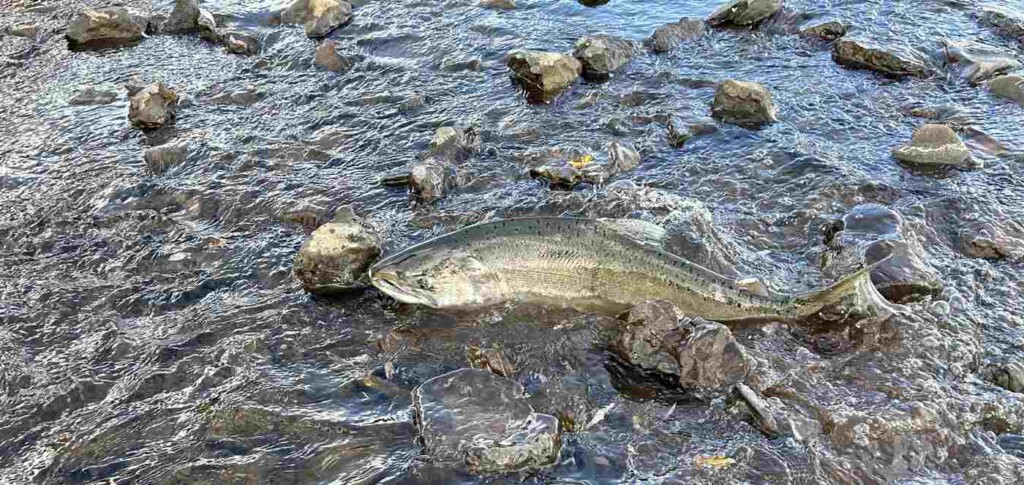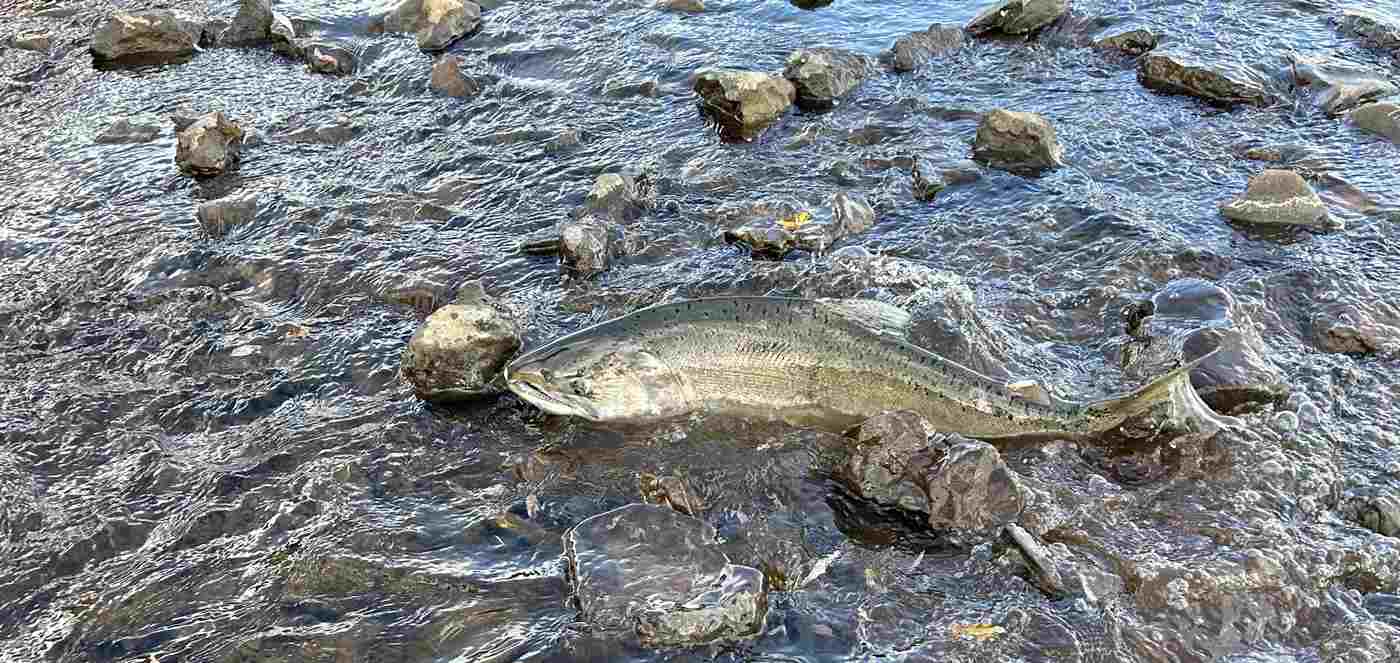
This little fellow carried the flag for his species’ triumphant return into the Klamath River Basin following a massive recent dam removal.
On October 16th, a fall-run Chinook salmon was identified by the Oregon Department of Fish and Wildlife (ODFW) in a tributary to the Klamath River above the now-demolished J.C. Boyle Dam, becoming the first fish to return to the Klamath Basin in Oregon since 1912 when the first of four hydroelectric dams was constructed, blocking migration.
The salmon and others likely traveled about 230 miles from the Pacific Ocean to reach the tributary, even though all four dams were removed just two months ago.
Fish biologists have been surveying the Klamath River and its tributaries since the dam removal as part of the agency’s responsibility to monitor the repopulation of various fish species to the basin in collaboration with the Klamath Tribes.
“This is an exciting and historic development in the Klamath Basin that demonstrates the resiliency of salmon and steelhead,” said ODFW Director Debbie Colbert. “It also inspires us to continue restoration work in the upper basin. I want to thank everyone that has contributed to this effort over the last two decades.”
“The return of our relatives the c’iyaal’s is overwhelming for our tribe. This is what our members worked for and believed in for so many decades,” said Roberta Frost, Klamath Tribes Secretary, using their word for salmon.
“I want to honor that work and thank them for their persistence in the face of what felt like an unmovable obstacle. The salmon are just like our tribal people, and they know where home is and returned as soon as they were able.”
Mark Hereford, ODFW’s Klamath Fisheries Reintroduction Project Leader, was part of the survey team that identified the fall-run Chinook. His team was ecstatic when they saw the first salmon.
SALMON DOING WELL: Maine Sets Records for Atlantic Herring and Salmon Runs in the Penobscot River
“We saw a large fish the day before rise to surface in the Klamath River, but we only saw a dorsal fin,” said Hereford. “I thought, was that a salmon or maybe it was a very large rainbow trout?” Once the team returned on the 16th and 17th, they were able to confirm that salmon were in the tributary.
It took 20 years of advocacy and legal challenges from the Yurok Tribe and other tribal, local, and federal groups and agencies to see the four dams on the river demolished.
MORE GREAT RIVER NEWS: Salmon Return to the Heart of UK for First Time in 100 Years After Dam Removal: ‘It’s very rewarding’
It began in 2004 when the water flow volume into one of the reservoirs downstream led to overly warm, overly stagnant water and an outbreak of disease. Tens of thousands of salmon died, and an investigation into the causes discovered that it had been negligent monitoring of water flow from Irongate Dam.
This raised the inquiry as to whether the dams, which had ceased to be a significant electricity source to the community, were still necessary.
SHARE This Great Follow-up From The News Of The Freeing Of This River…




















